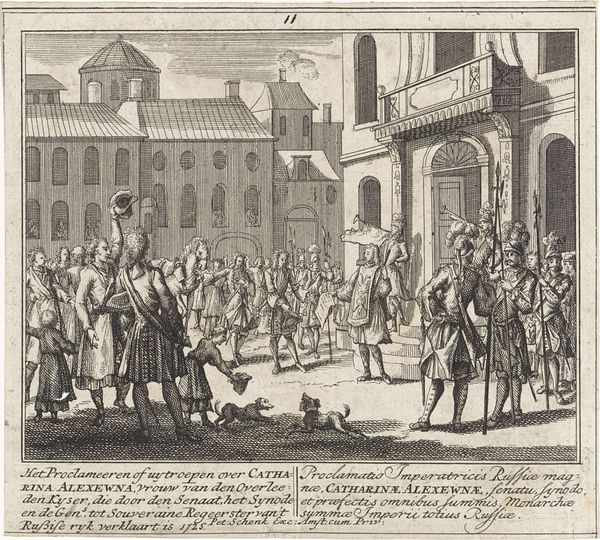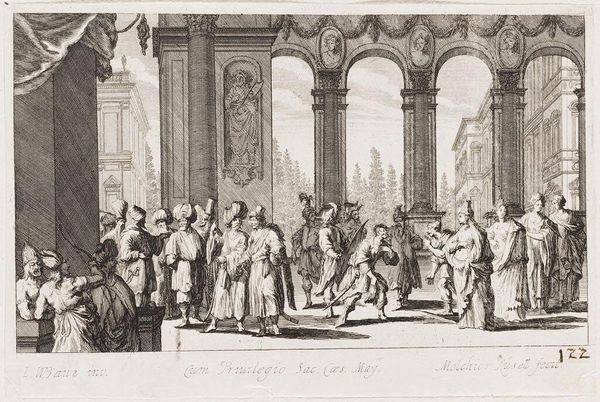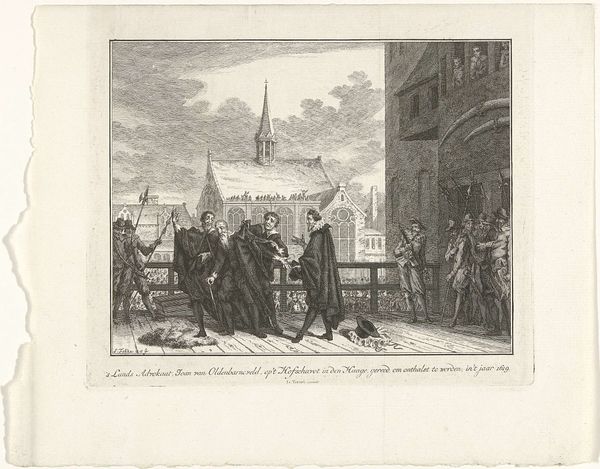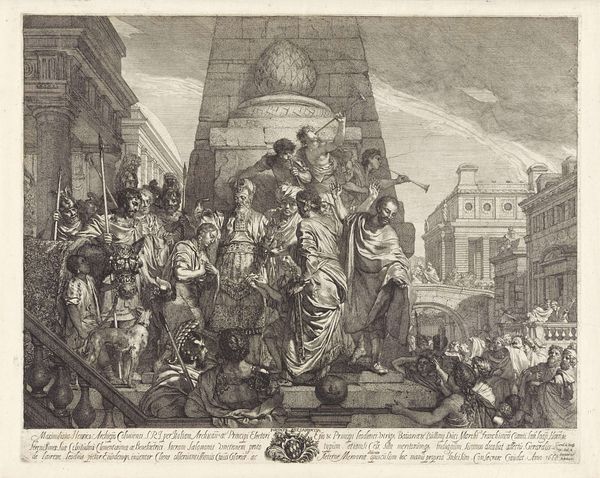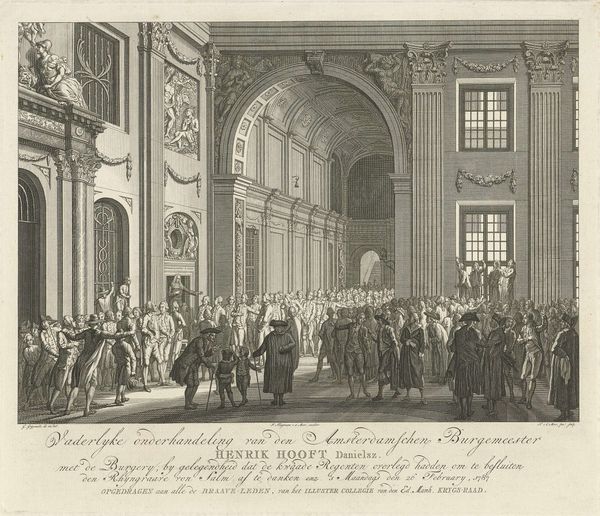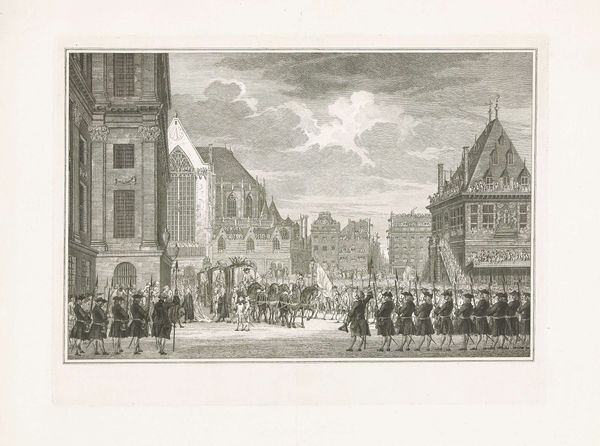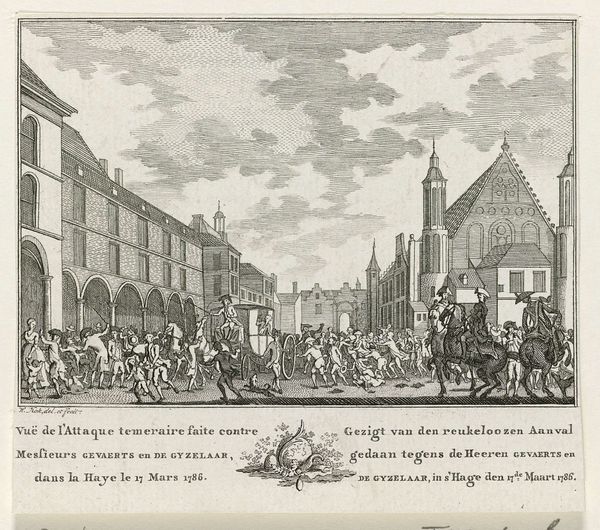
Dimensions: height 351 mm, width 463 mm
Copyright: Rijks Museum: Open Domain
Editor: We're looking at "Departure of the Prince of Orange from The Hague, 1795," an engraving by M. Brakel. The scene feels strangely staged; like a historical tableau vivant. I'm struck by the rigid formality against what I imagine must have been a moment of great uncertainty. What catches your eye? Curator: The print really encapsulates the complexities of public image-making and political messaging at the time. It documents a pivotal moment – the Prince of Orange fleeing the Netherlands as revolutionary forces approached, which, of course, led to the Batavian Republic. But the depiction of the departure, this is not mere documentation, right? Editor: Not at all, the whole picture feels quite managed, especially the way the artist decided to place the characters and arrange the building behind. Curator: Exactly. Consider where this print might have circulated and how it was used? The image of a dignified departure, despite the chaos, aims to preserve the image of the Orange family. Did it succeed, or did it reinforce a sense of a crumbling regime dependent upon a public image increasingly at odds with reality? Also, there's the fascinating question of how prints like these were distributed. Editor: That's so interesting; it recontextualizes what I initially saw as a simply staged scene to the strategic construction of narrative in the face of huge political upset! And knowing this print circulated among the public offers a completely new viewpoint to it! Thank you! Curator: It all serves as a reminder of the critical role art plays in shaping collective memory, regardless of who supports it.
Comments
No comments
Be the first to comment and join the conversation on the ultimate creative platform.
